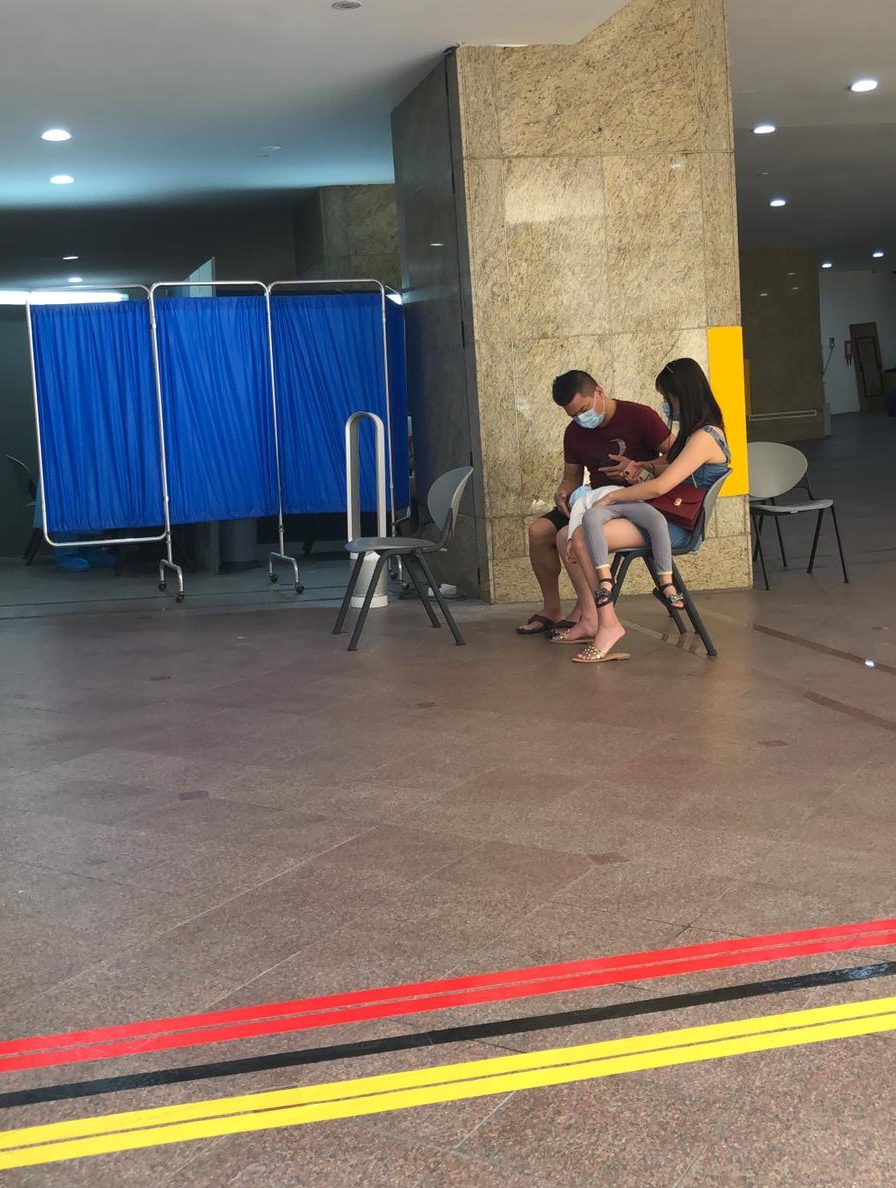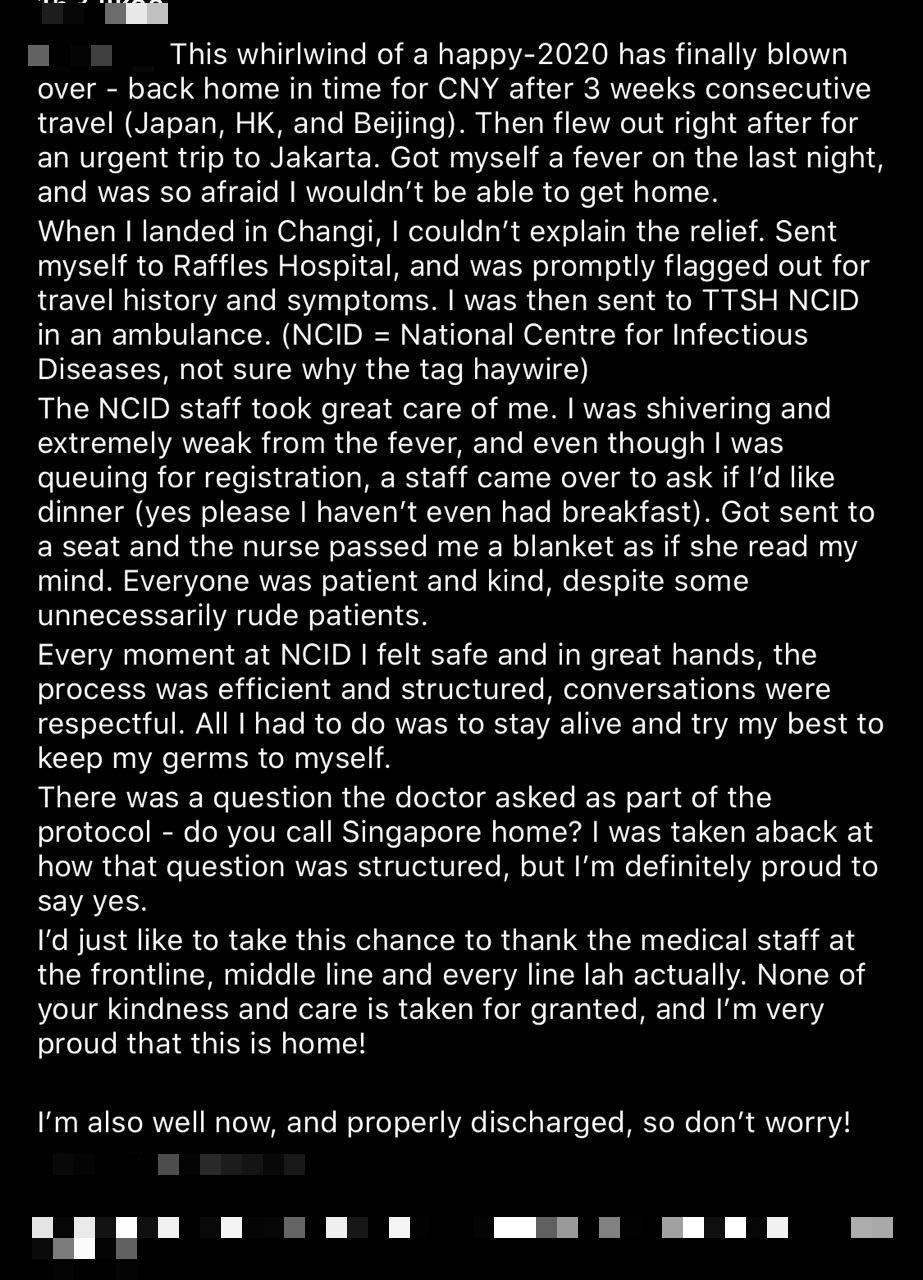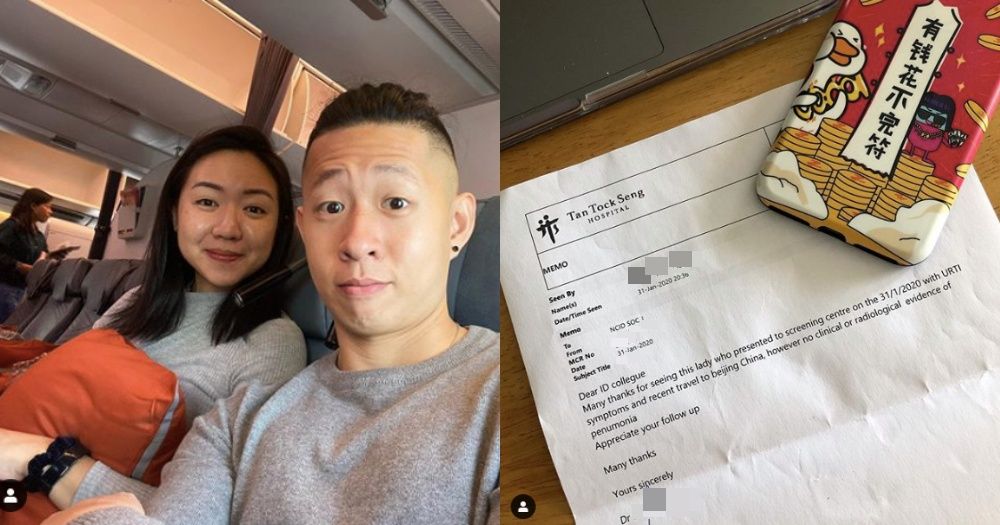Singaporean Robyn Tan came down with a fever on Jan. 30, two days after touching down in Jakarta for a series of work meetings.
Even though she doubted the worst, she wasn't in denial of the possibility that it well could be — she was indeed in China within the two weeks prior.
Japan, then Beijing for 10 days
The 30-year-old had been travelling quite a bit in the month of January: in the first part, she was in Japan with her husband, after which they spent 10 days in Beijing (Jan. 11-21, to be precise) — her for work, and him for an extended holiday up in Harbin.
Both then returned to Singapore, after which she flew again to Jakarta.
But despite her time in Beijing, Tan told Mothership she didn't feel sufficiently fearful of the coronavirus situation to feel compelled to wear a mask.
"Actually I wasn't so afraid of contracting the virus cos the whole city was pretty empty, and most of the times I was just between hotel and office, and restaurants nearby."
At the time she was there, Tan said she already observed that surgical masks were sold out so she knew people were already paying attention to the outbreak.
It being the pre-Lunar New Year period, too, though, meant the mass movement of people across, into and out of China would represent a lingering concern on people's minds.
But she felt no significant reason for concern because none of her colleagues were showing any symptoms. Also, the sight of people wearing masks in Beijing is quite a norm for Tan, who travels up to Beijing for work every two months or so.
"Actually, people wear masks on the streets or trains for warmth, perhaps not so much for hygiene, but also because of the air!"
Another reason she didn't wear a mask herself was because her daily commute to her office was a walk from her accommodation, and at the time she was there, the air was fine.
In Jakarta, then fever set in
It was only when she arrived in Jakarta on Jan. 28 that she started to feel unwell.
When she developed a fever on Jan. 30, she decided she should cancel all her subsequent meetings and return to Singapore earlier.
Did she think it was the coronavirus at this point?
"I would say I had the worry, but logically, the chance (of it being the coronavirus) was not high. None of my Chinese colleagues had the symptoms and I was also nearing the end of my 14-day window (from the time she left China)."
That being said, she knew it was a bad time to fall ill. She felt her Jakarta colleagues tensing up around her once they knew she was unwell. She said with a laugh:
"One colleague straight up told me she was relieved I wasn't going to the office when I was back in Singapore, after coming back from China. And when I was in Jakarta, I think she just actively made sure I didn't show symptoms, and as soon as I said I wasn't feeling well, she whipped out her mask!"
Landed, then made a beeline to Raffles Hospital
With her temperature still running high, popping Panadol two hours prior and dealing with her head and body aches, Tan boarded her flight, mask on, had a few mouthfuls of rice (the food served was spicy chicken and she didn't think it was a good idea to eat that while sick) and landed at Changi Airport at about 4pm on Jan. 31.
She wasn't picked up by temperature scanners on arrival because her fever was suppressed by her painkillers, but she decided she should check herself into a hospital — until she realised she hadn't the first idea where she should go.
"It was a decision made purely out of familiarity (it's near my place), and I also didn't want to impose on people at Tan Tock Seng and SGH," she said, also admitting she didn't know the airport terminals had medical clinics. "I also didn't want to go to a regular GP in my neighbourhood because I thought a larger institution like Raffles Hospital would have more resources in place to deal with it."
She asked her husband to help her call ahead to find out what procedure she should follow, but that became moot when she was stopped at the front desk for temperature checks when she arrived and was sent straight to the hospital's Accident & Emergency department.
 Photo courtesy of Robyn Tan
Photo courtesy of Robyn Tan
There, she was isolated with a 1.5m perimeter — the only person allowed inside that circle was a nurse who checked her vital statistics — along a few others who were flagged as potential suspect cases, and spent roughly an hour waiting for an ambulance that would send her straight to the National Centre for Infectious Diseases (NCID).
All in all, she said her experience there left her impressed by the kindness and professionalism shown by medical staff in how they handled things — her case as well as other families gathered there.
"To some extent I was expecting some 'judgement', like walau you go China come back fall sick don't bring the virus back hahaha. But no leh, I think when they flagged me out all the way, I didn't feel that at all."
The only thing Tan said she did feel was like a hazard, with everyone around her dressed in protective gear — understandably so, of course.
"I definitely felt like a hazard, so I just tried to suppress my cough and hold in my germs, haha."
NCID: "Like an examination hall"
Things were extremely organised at NCID too, she said.
She was driven straight to the entrance and followed clear directions and marked paths, walking in by herself to registration.
She said she felt hit hard by the cold blasts of air-conditioning, which exacerbated her body aches and chills, but followed a clear sequence of stations to visit — at registration, a staffer read the memo she was handed at Raffles Hospital and passed her through a beeping temperature scanner.
Notably, she was also famished by this point, and miraculously, as she stood in line to register herself to be examined, a staffer came up to her to ask if she wanted food.
This was something she was very surprised and thankful for because it was approaching 6pm by this point, and she hadn't had anything other than the small bit of rice on the plane and wasn't allowed to leave the A&E waiting area while at Raffles Hospital either.
She also noticed that staff were cleaning and disinfecting every surface as soon as a patient passed through it before receiving the next person.
Then came an area that felt to her like an examination hall, with numbered desks and chairs spaced about two metres apart. Medical staff took her blood pressure, asked her questions, and even distributed blankets to patients like her.
Her risk was then assessed based on her experience: Tan was deemed "moderately high risk" because she had been to China, although she did not have contact with any Wuhan patients, and the people around her did not show symptoms.
She was eventually cleared of concern when she was sent for an X-Ray to check her lungs for pneumonia. Thankfully, these scans showed her lungs were "very clear", so she didn't have to go for further checks.
And finally, she was given a letter clearing her of pneumonia, as well as a follow-up appointment to check in between two to five days later (hers was on Thursday, Feb. 6), and allowed to leave, so she hopped a cab home.
"Everyone was patient and kind"
But on the whole, Tan says she came away from her entire experience feeling proud to call Singapore home — a little cheesy, but she was overwhelmed by relief just to be home after everything she went through while feeling hungry, ill and feverish.
Here's a screenshot of an Instagram post she put up after her experience:

 Screenshot via Tan's Instagram post
Screenshot via Tan's Instagram post
Kudos to our medical staff at the frontlines of this battle we are waging in Singapore now.
Top photos courtesy of Robyn Tan
If you like what you read, follow us on Facebook, Instagram, Twitter and Telegram to get the latest updates.
